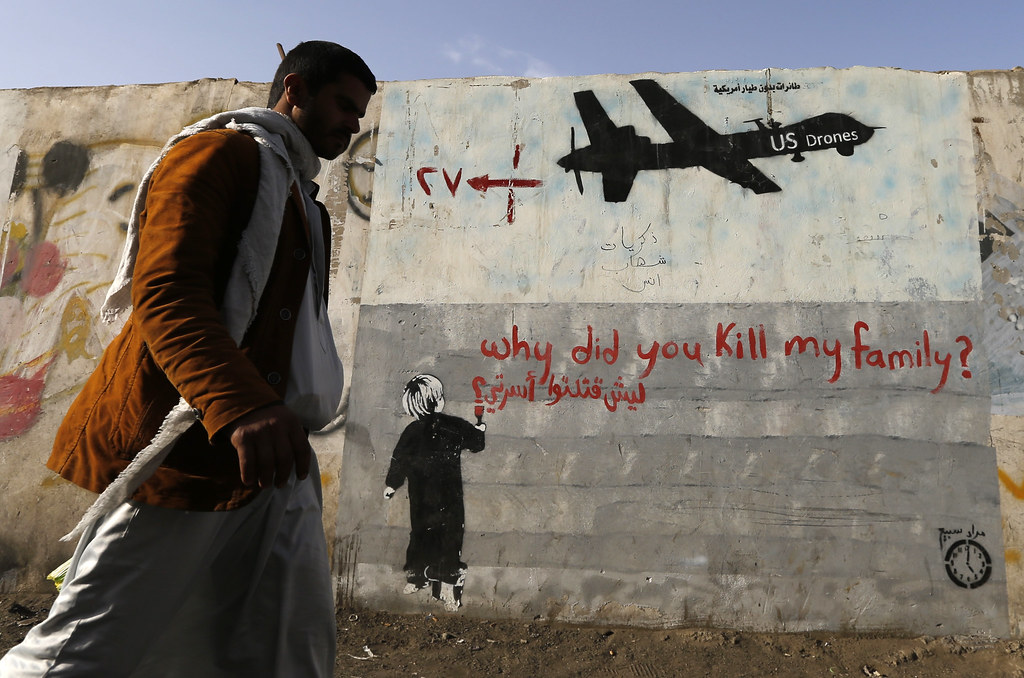Drones, Yemen, and the New Terrorism

As fires burn at critical infrastructure facilities in Saudi Arabia, a striking new link between Yemen and drones (which may prove to be a ruse), continues a story that has been developing for years, and reminds those who care about homeland security that we are watching the development of new capabilities that are likely to have an impact far beyond the Arabian Peninsula.
While a proxy war has been continuing in Yemen between Iran-backed Houthis and the US and Saudi-supported Yemeni government, rebel groups have been honing their skill at turning recreational and commercially available drone technology into weapons of war. I think it is interesting that the refinement of this dangerous new tool of terror is taking place in a country where, nearly a decade since, the United States flexed its remote controlled muscles, using drones to kill several members of the al-Awlaki family, including at least two American citizens and multiple children, the most recent of which was killed in January of 2017 under the Trump administration.
Yemen has long been a base of operations for terrorist activity. The collective memory, as it fades with the passage of time, might forget the bombing of the USS Cole in October of 2000, which followed an earlier attempted attack by Al-Qaeda on the USS The Sullivans in January of 2000. Both of these attacks took place in Yemen’s Aden harbor and had connections to Yemeni and Saudi terrorists, some of whom went on to take part in the attacks of 9/11.
More recently, following the mass shooting at Fort Hood, Texas by Nidal Hasan, it emerged that Hasan had connections to Yemeni-American Anwar al-Awlaki. al-Awlaki continued to emerge as connected to a number of attempted attacks, including the 2009 “Underwear Bomber” and its perpetrator Umar Farouk Abdulmuttallab who told investigators that he was trained by al-Awlaki, who had moved to Yemen in 2004. By 2010, following a number of documented statements by al-Awlaki supporting al Qaeda, al-Awlaki was named a member of Al Qaeda by the United Nations, and became Terrorist #1 in terms of threat and a target in the ongoing war on terrorism.
In September of 2011, ten years after the 9/11 attacks, Anwar al-Awlaki was killed by a Reaper drone in Yemen. Also killed in the attack was Samir Khan, another American citizen. According to a 2013 article in the New York Times, al-Awlaki’s killing marked the first extra-judicial killing of an American citizen as an enemy in war by the American government since the Civil War. But that wasn’t the end of the story.
Just two weeks later, the US conducted another drone operation that resulted in the deaths of Anwar al-Awlaki’s 16-year old son, Abdulrahman, and his 17-year old cousin as they sat at an outdoor cafe in Shabwa, Yemen. That drone operation also killed 8 other people.
The US was also responsible for the death of Anwar al-Awlaki’s 9-year old daughter, Nawar, who died during an attack by special operations personnel in Yemen in January of 2017.
Since the drone operations conducted by the American forces targeting Anwar al-Awlaki and others in Yemen, rebels within Yemen have apparently been building a drone capability of their own. In January of 2019, Houthi rebels claimed responsibility for what has been called the first successful assassination using a drone operated by a non-governmental entity. Operators used a drone laden with explosives to attack a military parade at an air base near Sanaa, Yemen, killing two officers and six soldiers, including the head of Yemen’s intelligence unit.
Now, the Houthi rebels have taken responsibility for a major attack on Saudi oil facilities, which they have tried before with less success. While it may emerge that Iran or others were truly at the heart of the attack on Saudi Arabia’s oil facilities, the development of drone technology as a weapon of terrorism bears watching. The equipment used in the attacks known to be the work of the Houthis, that is the January air base attack and 2018 attacks on Aramco facilities in Saudi Arabia and on the Abu Dhabi Airport, is reported to be commercially available technology. And while it may be difficult to obtain such hardware in places like southern Yemen, one only has to order online or run down to the local hobby store in the US. These developments should be on the list of things that keep critical infrastructure security professionals up at night.